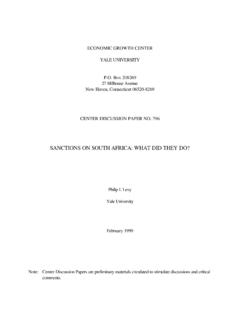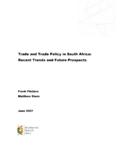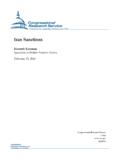Transcription of Mutual Evaluation of South Africa - Executive Summary
1 Financial Action Task Force Eastern and Southern Africa Anti-Money Laundering Group Mutual Evaluation Report - Executive Summary Anti-Money Laundering and Combating the Financing of Terrorism 26 February 2009 South Africa 2 South Africa is a member of the Financial Action Task Force (FATF) and of the Eastern and Southern Africa Anti-Money Laundering Group (ESAAMLG). This Evaluation was conducted by the FATF and ESAAMLG and then discussed and adopted in the FATF Plenary as a 2nd Mutual Evaluation on 26 February 2009. 2009 FATF/OECD and ESAAMLG. All rights reserved No reproduction or translation of this publication may be made without prior written permission.
2 Applications for such permission, for all or part of this publication, should be made to the FATF Secretariat, 2 rue Andr Pascal 75775 Paris Cedex 16, France (fax +33 1 44 30 61 37 or e-mail: 3 Executive Summary Mutual Evaluation OF South Africa 1. Background Information 1. This report summarises the anti-money laundering (AML)/combating the financing of terrorism (CFT) measures in place in South Africa as of the time of the on-site visit (4-15 August 2008), and shortly thereafter. The report describes and analyses those measures and provides recommendations on how certain aspects of the system could be strengthened. It also sets out South Africa s levels of compliance with the Financial Action Task Force (FATF) 40+9 Recommendations (see the attached table on the Ratings of Compliance with the FATF Recommendations).)
3 2. The Republic of South Africa is a developing country located in a region where the economy remains primarily cash-based. It has a first-world banking sector characterised by well established infrastructure and technology, but limited participation (over 60% of the adult population was excluded from any formal financial services in 1994), and a growing demand for financial services. A priority of the Government is to ensure that individuals currently excluded from using formal financial services, particularly potential low-income customers, can access and, on a sustainable basis, use financial services being offered by registered financial services providers and which are appropriate to their needs.
4 3. Major profit-generating crimes include fraud, theft, corruption, racketeering, precious metals smuggling, abalone poaching, 419 Nigerian-type economic/investment frauds and pyramid schemes, with increasing numbers of sophisticated and large-scale economic crimes and crimes through criminal syndicates. South Africa remains a transport point for drug trafficking. Corruption also presents a problem. However, the South African authorities are committed to pursuing this issue through a range of initiatives such as the introduction of measures to entrench good governance and transparency. Security agencies indicated that the current threat from international and domestic terrorism is low, and will remain to be low for the foreseeable future.
5 Nevertheless, the authorities are vigilant about the concern that South Africa could be used as a transit or hideaway destination for people with terrorist links. 4. The development of AML/CFT systems in South Africa represents work in progress. South Africa has demonstrated a strong commitment to implementing AML/CFT systems which has involved close cooperation and coordination between a variety of government departments and agencies. The authorities have sought to construct a system which uses as its reference the relevant United Nations Conventions and the international standards as set out by the Financial Action Task Force. Since 2003, South Africa has taken numerous steps to address many of the recommendations that were made in its first FATF Mutual Evaluation report.
6 2. Legal systems and Related Institutional Measures 5. South Africa has criminalised ML in three separate provisions of the Prevention of Organised Crime Act, 1998 (POCA), which cover the conversion or transfer, concealment or disguise, possession, acquisition of property in a manner that is largely consistent with the 1988 United Nations (UN) Convention against Illicit Traffic in Narcotic Drugs and Psychotropic Substances (Vienna Convention) and the 2000 UN Convention against Transnational Organised Crime (Palermo Convention). However, acquisition, possession or use of the proceeds of unlawful activities does not 4 apply to the person who committed the predicate offence.
7 South Africa adopts an all crimes approach which covers a range of offences in each of the 20 designated categories of offences. There is also a broad range of ancillary offences to the money laundering offences. Liability for money laundering extends to both natural and legal persons, and proof of knowledge can be derived from objective factual circumstances. The penalties for money laundering are a fine not exceeding ZAR 100 million or imprisonment for a period not exceeding 30 years. The lack of more comprehensive statistics and data maintained by the relevant authorities means that it is not possible to obtain an accurate picture of the effectiveness of the AML/CFT regime in South Africa .
8 6. South Africa criminalised terrorist financing in section 4 of the Protection of Constitutional Democracy against Terrorist and Related Activities Act (POCDATARA). The POCDATARA is comprehensive and criminalises the collection or provision of property with the intention that it be used for the purpose of committing a terrorist act, or by a terrorist organisation or individual terrorist for any purpose. The term property is broadly defined, and there is no requirement that the property actually be used to carry out or attempt a terrorist act, or be linked to a specific terrorist act. Terrorist financing is also a predicate offence for money laundering. A broad range of ancillary offences also apply to the terrorist financing offence.
9 The maximum penalty (which can apply to natural or legal persons) for conviction of a terror financing offence is a fine of R100 million or imprisonment for a period of 15 years. However, the effectiveness of the measures put in place by POCDATARA cannot be assessed as there have been no prosecutions under this provision. 7. The POCA provides for both criminal (conviction based) and civil (not dependent on a conviction) forfeiture. Overall, the confiscation and forfeiture regime is being effectively implemented, with the statistics demonstrating that the value of the proceeds confiscated is high. The Asset Forfeiture Unit (AFU) in the National Prosecuting Authority (NPA) administers and implements the freezing and forfeiture provisions of the POCA which apply to a broad range of proceeds (both direct and indirect) and property of corresponding value.
10 Additionally, the Criminal Procedure Act provides for the search, seizure, forfeiture and disposal of the instrumentalities of crime. Any property which may be subject to confiscation or civil forfeiture may be frozen (restrained) by means of an ex parte application. 8. Provisions in POCDATARA allow authorities to freeze assets pursuant to United Nations Security Council Resolutions S/RES/1267(1999) and S/RES/1373(2001). For S/RES/1267(1999), the President must give notice by proclamation in the Gazette of those who have been designated by the UN Security Council. To date, 63 proclamations have been issued through this process, although no assets relating to designated persons/entities have been located.


















